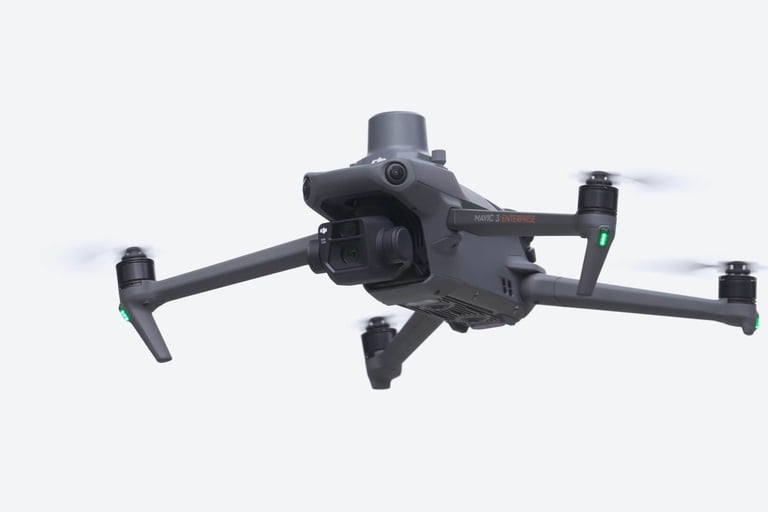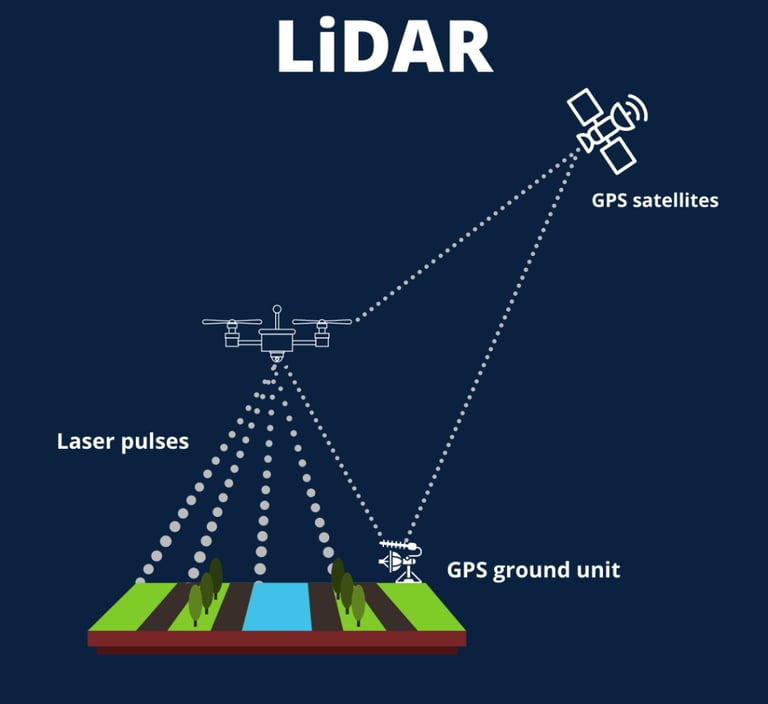How Drones Reduce Cost, Time & Risk in the T&D Industry
Learn how drones are used in the Transmission and Distribution industries.


In the T&D (Transmission & Distribution) industry, inspections are vital for infrastructure assessment. From the large steel pylons spanning hundreds, if not thousands of miles transporting electricity to the wooden poles distributing power within cities, towns and villages, there are many components for electrical engineers to inspect. The traditional way to inspect pylons and powerlines include helicopters, trucks with a hydraulic lifting bucket (Bucket Trucks), climbing the pylons/poles or a combination of these. These methods, of course, include risk to the workers and to the infrastructure as well as requiring large amounts of time, money and manpower to conduct.
Enter drones. Drones or sUAS (small-unmanned aircraft system) can serve as a great alternative to these traditional inspection methods. In the last few years, the techonology in drones has advanced so much, as they now provide tools such as extensive HD optical zoom, thermal imaging and RTK or LiDAR mapping. The DJI Mavic 3E, for example, is equipped with a dual-camera. The first camera includes a 4/3inch CMOS sensor with mechanical shutter while capturing 20 MP images. The second camera serves as a telecamera which allows users a 52x optical zoom while providing 12MP photos (at the lowest). If you want to be able to capture thermal imaging of pylons and attached equipment, use the Mavic 3T which is equipped with a thermal processing camera. There are, of course, other options for someone in the market for a drone for T&D inspections, but these are regarded as some of the best considering their capabilities to capture valuable data while remaining low-cost and time efficient. The flight time on these Mavic drones average around 42-43 minutes per battery (that's excluding powering on the drone, calibrating it, importing mission data, etc.) There's also the trusted DJI Phantom 4 Pro which has been proven to be the most reliable drone platform for years in the industry. Though sadly it has been discontinued, many professional pilots still refer to this model as it provides beautiful 4K video and high-quality imagery with a mechancial shutter whilst providing the option to install a RTK module on top of the drone. You can still find this drone on the online market for a relatively affordable price, utilizing sites such as eBay or Swappa. Finally, unlike the Mavics, the Phantom has better support for third-party drone applications like Pix4d or Litchi, enabling pilots to do more with their drone compared to the DJI Fly application.
Conversely, when looking at piloting a helicopter to conduct T&D inspections, there are huge costs compared to operating a drone that only weighs 2 pounds (915g) like the Mavic. These expensive costs include purchasing or renting a helicopter, hiring a pilot and getting fuel. All of these are exponentially more expensive than training an in-house employee to fly a drone or hiring a certified Part 107 Remote Pilot.
Picture this, you're a T&D company located in South Florida and you've been contracted to inspect a large corridor of pylons in the Florida Everglades. Most pylons in the Everglades have service roads nearby. You could send out climbers to the pylons but that could be difficult due to unaccessible terrain beneath each pylon. There's helicopters which you could launch from different parts of South Florida and manually inspect from the aircraft. Or you could send a few pickup trucks with a few workers equipped with enterprise-grade drones & proper training to carry out the inspections.
What would be the best choice? Of course, I'm biased and the question is rhetorical, but it depends on your company's needs and goals. Personally, I'd choose the drone fleet because of these reasons:
Time
Money
Risk
TIME - Think of the time you could save by sending out your own employees equipped with lightweight drones they can launch from almost anywhere (you could even launch/land from the palm of your hand). The data they capture can be instantly uploaded to your company's database either in-the-field or when they get back to the office. Reviewing the data would be faster and you'd have more detailed, consistent data to evaluate. So in turn, you'd have better deliverables and fairly quick access. Additionally, drones take a fraction of the time to prepare for flight compared to helicopters or climbing operations.
MONEY - Operating a helicopter can be expensive. Not to mention getting a pilot to fly it and buying the fuel. Costs can be as much as $2 million dollars. Plus, the aircraft is cumbersome compared to drones. Even the larger enterprise drones like the DJI Matrice 300 can be stored in an SUV or pickup truck. These drones are small compared to helicopters and can fly in much closer proximity to pylons if needed. But even depending on the drone and its payload, you could fly further away from a pylon compared to a helicopter due to powerful optical zoom capabilities.
Getting a Part 107 certification (FAA sanctioned certification) as a commerical drone pilot costs $180. Throw in the cost of the drone such as the Mavic 3E plus insurance, you're at about $4,500-6,000+ (conservatively). Possibly a few thousand more depending on the insurance, drone classes, drone model, accessories and software applications that are needed. You could also purchase drones/equipment that are more expensive, allowing you to get even more detailed data such as LiDAR mapping but again, this all depends on your company's goals and needs.


DJI Mavic 3E with a RTK module or "hat" on top of the drone


Here's a snapshot of how LiDAR (Light Detection and Ranging) operates. It can provide extremely accurate data, down to the centimeter depending on your LiDAR camera model and GPS ground unit.
RISK - The risk involved with workers climbing pylons shouldn't be ruled out of the picture when considering T&D inspections. These workers face the risk of falling from dangerous heights especially with unexpected wind gusts and electrical outputs. These workers are absolutely essential to manually install new equipment and fix deteriorating ones but think of how much risk you take out of the inspection process with drones. You could even train these very workers to fly the drones for your company. You'd be improving your workers' skillset and safety while saving money for the company as a whole.


In conclusion, drones have the ability to make pylon and powerline inspections safer, faster and cheaper. Depending on the drone model you decide to go with (along with additional equipment mentioned before), the amount of money you could save while reducing risk and time spent is unmatched compared to traditional inspection practices. This is just one of the many uses drones have to help society complete tasks; T&D is just one industry. Next we'll discuss how drones are helping the inspection process of homes to expedite insurance underwriting and claims adjustments.


DJI Phantom 4 Pro. Arguably one of the best drones built but unfortunately discontinued by DJI.


